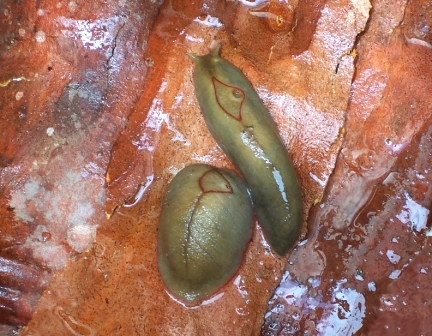Facts About Red triangle slug
The red triangle slug, scientifically known as *Triboniophorus graeffei*, is an intriguing species native to eastern Australia. This large, air-breathing terrestrial slug is notable for its vibrant colors and distinctive appearance. It belongs to the Athoracophoridae family and can reach up to 15 centimeters in length, making it the largest native land slug in Australia.
The red triangle slug thrives in diverse habitats, including urban gardens, forests, woodlands, and heaths. It primarily feeds on algae and mold, playing a vital role in maintaining the ecological balance of its environment.
One of the most fascinating aspects of these slugs is their defense mechanism. They can secrete a sticky mucus that helps deter predators. With two tentacles and a variety of colors—ranging from white, yellow, gray, pink, and red to olive green—these slugs are truly remarkable. Juveniles differ in appearance from adults, as they lack the characteristic red triangle and border on their foot. Researchers are still studying whether these color variations represent different species or subspecies.
Red triangle slugs are distributed along the east coast of Australia, from New South Wales to Queensland. There's also a striking bright pink relative, *Triboniophorus aff. graeffei*, found exclusively on Mount Kaputar. Although there have been reports of these slugs being introduced to the New Hebrides, there is no confirmed evidence due to insufficient material.
Photographs of *Triboniophorus graeffei* beautifully capture their stunning color variations and diverse body shapes. These images often depict the slugs in their contracted state, frequently observed on Sydney Blue Gums in Australia.
